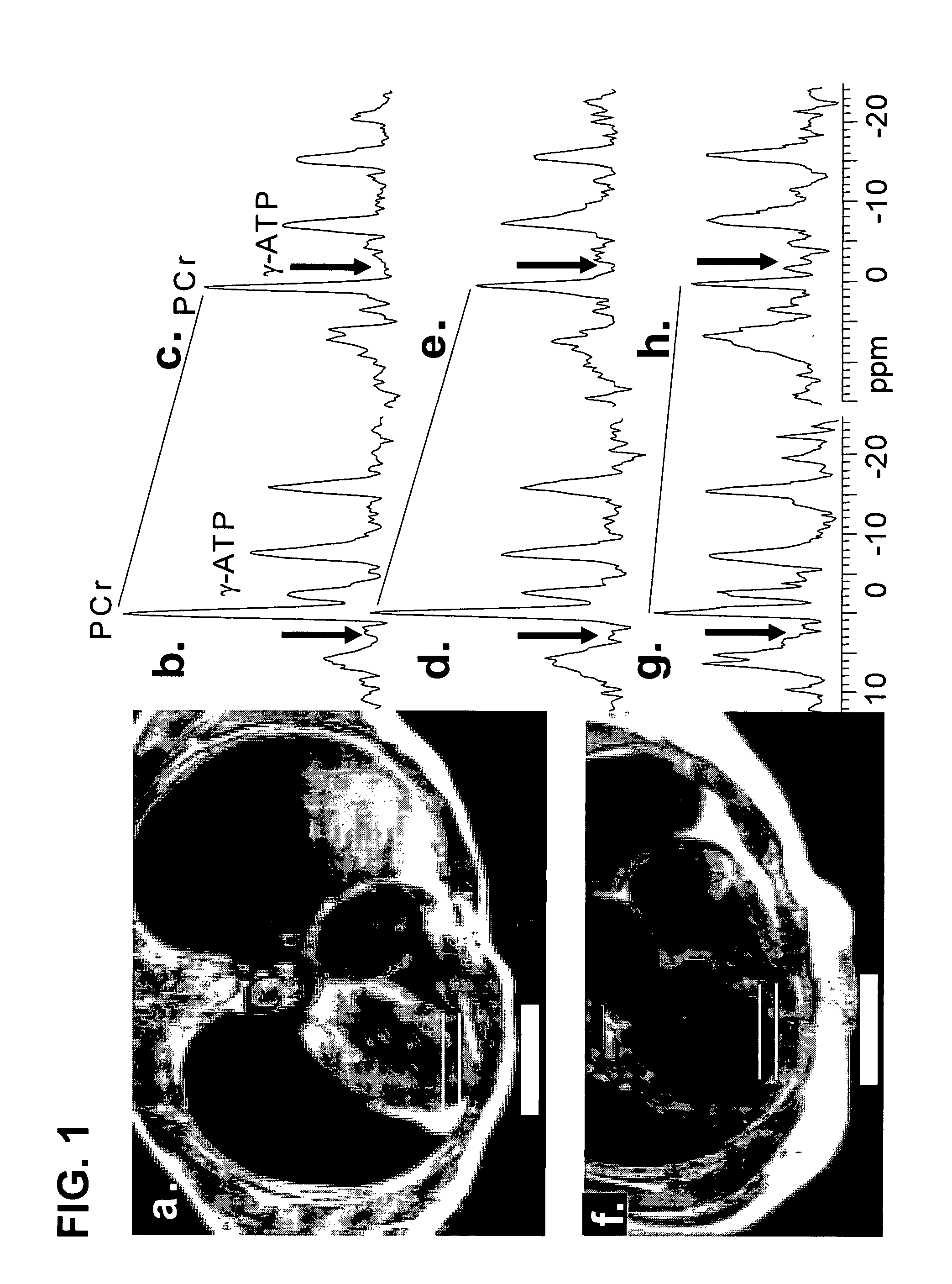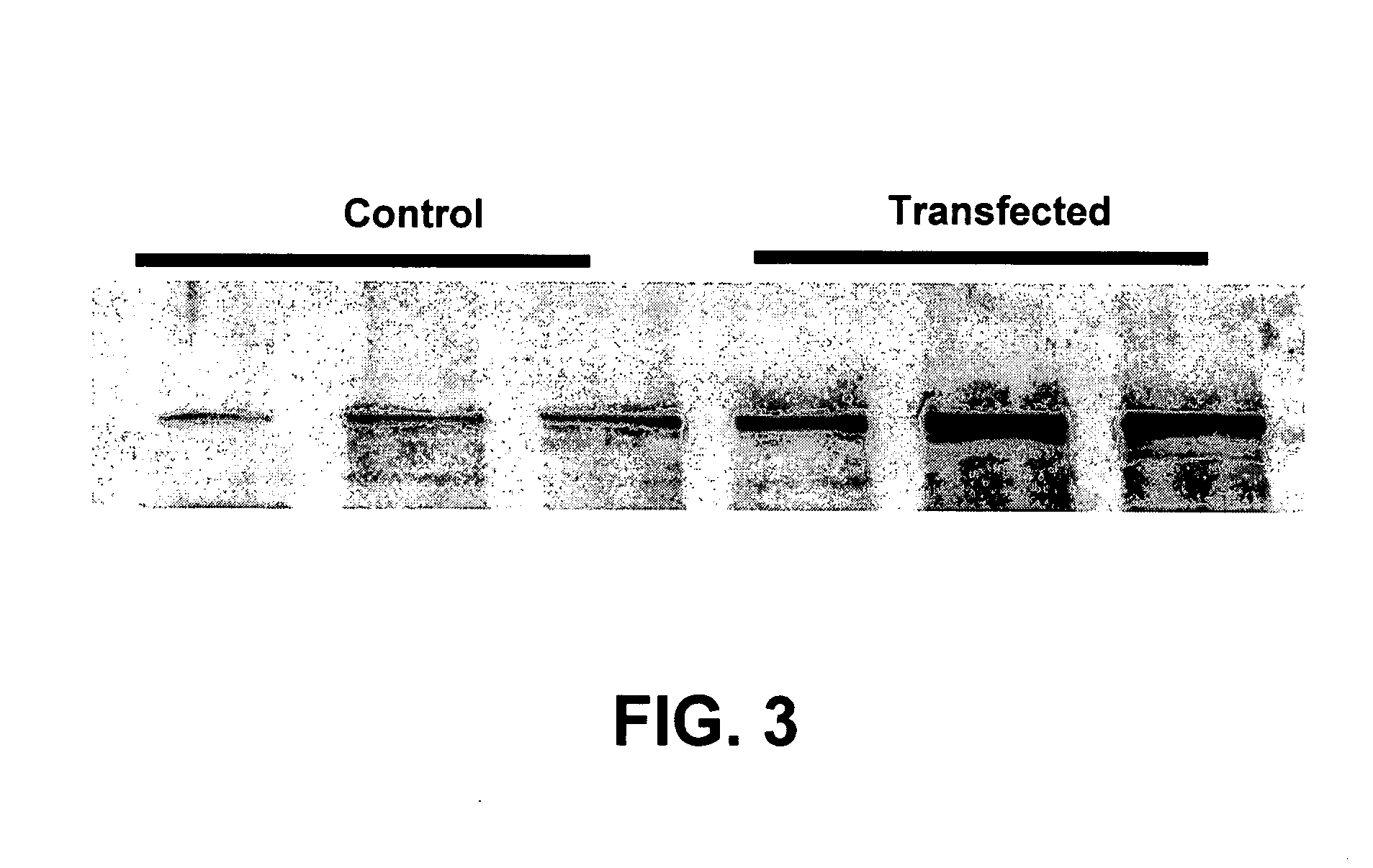Methods to improve creatine kinase metabolism and contractile function in cardiac muscle for the treatment of heart failure
a creatine kinase and cardiac muscle technology, applied in the field of new methods of treating and preventing heart failure, can solve the problems of not improving the contractile function in an animal model of heart failure, hf, and chronic supplementation of creatine, so as to improve the metabolism improve the supply of energy for cardiac cells, and improve the effect of cardiac creatine kinas
- Summary
- Abstract
- Description
- Claims
- Application Information
AI Technical Summary
Benefits of technology
Problems solved by technology
Method used
Image
Examples
example 1
[0121] Improving Cardiac Contractile Function with an Adenovirus Vector Construct Containing the Gene for CK-B.
[0122] This example describes the use of a viral vector construct to increase CK-B expression, improve energy metabolism, increase contractile function and limit adverse heart remodeling in a mouse model of heart failure.
[0123] Adeno-CK-B vector with a CMV promoter is created as previously described (Auricchio et al. 2001). The coding sequence of the mouse CK-B gene is amplified from mouse brain cDNA (CLONTECH) by using the following primers: forward, ATGCCCTTCTCCAACAGCCATAA (SEQ ID NO:1); reverse, TAGCTCTTCGACCGTCATCTTC (SEQ ID NO:2). The PCR product is cloned in the PCR 2.1 vector (Invitrogen, Carlsbad, Calif.) and sequenced. The mouse CK-B sequence is then cloned in the pAd-CMV-link shuttle plasmid (Vector Core, Institute for Human Gene Therapy, Univ. of Pennsylvania; CMV indicates the cytomegalovirus promoter). The pAd-CMV transgene plasmid is used for cotransfection ...
example 2
[0132] Preventing a Decline in Cardiac Contractile Function by Administering an AAV Vector Construct Containing the Gene for CK-M.
[0133] This example describes the use of an adeno-associated virus vector construct to increase CK-M expression, improve energy metabolism, increase contractile function and limit adverse heart remodeling over the course of several months in murine heart failure.
[0134] The vector is created as follows. Murine CK-M is cloned from a mouse skeleton muscle cDNA library by PCR. pAAV2-CMV-CK-M is constructed by replacing the EGFP in pAAV2-CMV-EGFP3 with CK-M. The map for this vector appears in FIG. 7. AAV2 / 9 vectors are produced in 293 cells by triple transfection method using AAV2 / 9 trans plasmid and purified by three rounds of cesium chloride gradient centrifugation.
[0135] TAC heart failure is induced and this vector is administered as described in Example 1. However, the time of administration precedes TAC by one week (FIG. 8 at A.). In animals transduced...
example 3
[0136] Increasing CK Flux in Human Heart Failure.
[0137] A process of the current invention can be used to improve contractile function and limit adverse heart remodeling in human heart failure which includes the intravenous administration of a vector including AAV2 / 9-CK-B.
[0138] Patients with heart failure can be identified by one or more clinical findings suggesting compromised contractile function such as symptoms or physical findings of heart failure, by imaging studies demonstrating reduced ventricular ejection fraction, impaired diastolic filling, ventricular dilatation, and / or by chest x-ray findings. Findings of abnormal cardiac creatine kinase metabolites or creatine kinase flux by 31P NMR spectroscopy can also be present (FIGS. 1 and 2) and, although not required to make the diagnosis of heart failure, could be used to guide the intervention and document pre-treatment levels or CK flux. The patients can be initially tested for the presence of antibodies directed against t...
PUM
| Property | Measurement | Unit |
|---|---|---|
| body temperature | aaaaa | aaaaa |
| body temperature | aaaaa | aaaaa |
| temperature | aaaaa | aaaaa |
Abstract
Description
Claims
Application Information
 Login to View More
Login to View More - R&D
- Intellectual Property
- Life Sciences
- Materials
- Tech Scout
- Unparalleled Data Quality
- Higher Quality Content
- 60% Fewer Hallucinations
Browse by: Latest US Patents, China's latest patents, Technical Efficacy Thesaurus, Application Domain, Technology Topic, Popular Technical Reports.
© 2025 PatSnap. All rights reserved.Legal|Privacy policy|Modern Slavery Act Transparency Statement|Sitemap|About US| Contact US: help@patsnap.com



